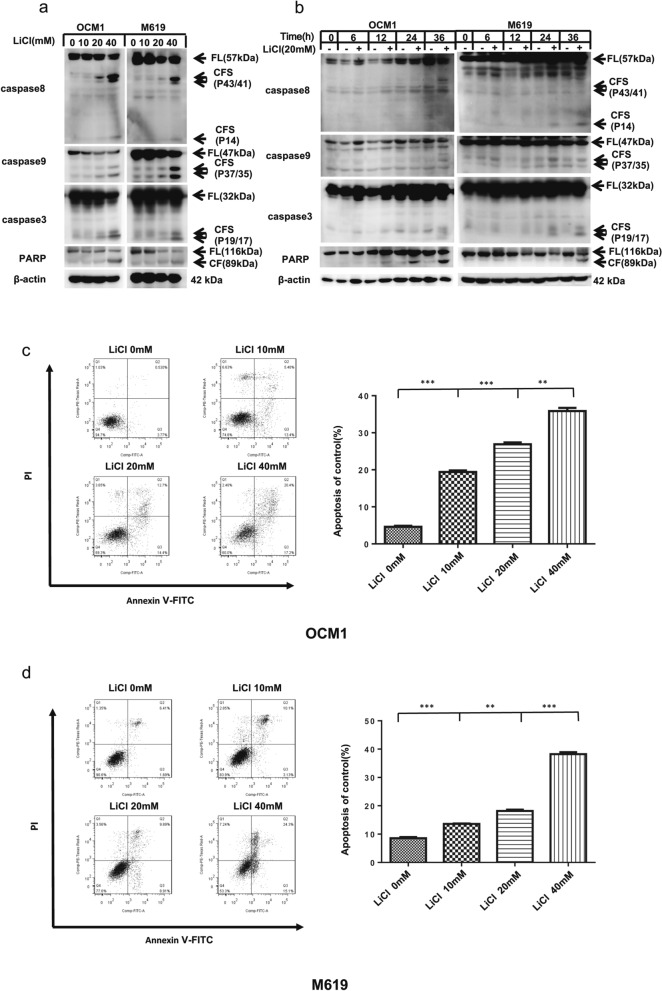Fig. 3.
LiCl induces apoptosis through a caspase-dependent pathway in a concentration- and time-dependent manner. a To perform a dose-gradient assay, OCM1 and M619 cells were treated with 0, 2.5, 5, 10, 20 or 40 mM LiCl for 36 h and then harvested for western blotting analysis. b For the time-gradient assay, OCM1 and M619 cells were treated with 20 mM LiCl for 0, 6, 12, 24 and 36 h and then harvested for western blotting analysis. Apoptosis-related protein (caspase8 caspase9, caspase3 and PARP) expression was quantified using ImageJ software and analysed with GraphPad Prism 5.0 software. CF: cleaved form. CFs: plural of cleaved form. PARP: poly (ADP-ribose) polymerase. All data are presented as the mean ± S.D. c d Annexin V/PI staining was performed to evaluate the effect of LiCl on apoptosis. c OCM1 and d M619 cells were treated with 0, 10, 20 or 40 mM LiCl for 24 h and then harvested for apoptosis analysis. Data analysis was performed using FlowJo software and SPSS software. All data are presented as the mean ± S.D. *P < 0.05, **P < 0.001, ***P < 0.001. Q1: (Annexin V- FITC)-/PI + , necrotic cells. Q2: (Annexin V + FITC) +/PI + , late apoptotic cells. Q3: (Annexin V- FITC) +/PI-, early apoptotic cells. Q4: (Annexin V-FITC)-/PI-, normal vehicle-treated cells. PI, propidium iodide; FITC, fluorescein isothiocyanate

